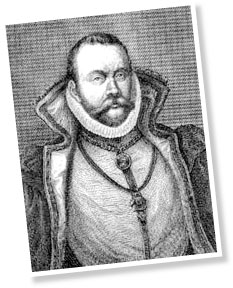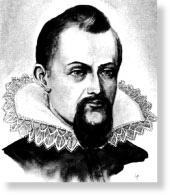|
DNA samples being examined to determine cause of
death:
Famed astronomer’s death, a mystery
by Chamari SENANAYAKE
Tycho Brahe was one of the greatest figures in science and astronomy.
 |
|
Tycho Brahe |
 |
|
The tomb after it was
opened for the second time. |
 |
|
The exhumation attracted a large
audience including scientists and the international press.
Pix: AP |
He made consistent observations of stars and planets, which supported
the heliocentric theory proposed earlier by Copernicus. These
observations were made using only a compass and a sextant.
Brahe catalogued over a 1,000 stars. He also proved that comets were
not just components of Earth’s atmosphere, but actual objects travelling
through space. Brahe showed irregularities in the Moon’s orbit and
discovered a new star in the Cassiopeia formation.
Brahe invented many instruments such as the Tyconian Quadrant, which
were widely copied and led to the invention of improved observational
equipment. In 1600, Tyco Brahe hired Johannes Kepler as his assistant.
In later years, Kepler would use Brahe’s work as the basis for the laws
of planetary movement that he developed.
Tyge (Latinised as Tycho) Brahe was born on December 14, 1546 in
Skane, then Denmark, now Sweden. He was the eldest son of a family of
nobility in Denmark.
He was brought up by his paternal uncle and became his heir. He
attended the universities of Copenhagen and Leipzig, and then travelled
through Germany, studying further at the universities of Wittenberg,
Rostock, and Basel. During this period his interest in alchemy and
astronomy was aroused, and he bought several astronomical instruments.
In a duel with another student, in Wittenberg in 1566, Tycho lost
part of his nose. For the rest of his life he wore a metal insert over
the missing part. He returned to Denmark in 1570.
New star
In 1572, Tycho observed the new star in Cassiopeia and published a
brief tract about it the following year. In 1574 he delivered a series
of lectures on astronomy at the University of Copenhagen. After another
tour of Germany, where he visited astronomers, Tycho accepted an offer
from King Frederick II to fund an observatory. He was given the little
island of Hven near Copenhagen, and there he built his observatory,
Uraniburg, which became the finest observatory in Europe.
 |
|
Johannes Kepler, Tycho
Brahe's assistant |
Brahe died at the age of 54 after, as the story goes, he stayed at
the table too long without relieving himself during a formal dinner,
possibly bursting his bladder in the process or of kidney failure.
That legend was challenged, as testing on hair samples taken from
Brahe’s tomb for the first time, in 1901, showed an abnormally high
level of mercury in the astronomer’s body, raising the possibility that
he had been poisoned.
Traces of the poisonous heavy metal in Brahe’s moustache and hair
were found during a 1901 exhumation, but no official record of the
examination was produced, so scientists will repeat the process using
modern technology to find out if he took an overdose of painkiller
containing mercury or was poisoned.
Reopened tomb
Two weeks ago, an international team of scientists opened his tomb in
the ‘Church of Our Lady Before Tyn’ near Prague’s Old Town Square, where
Brahe had been buried since 1601. After eight hours of work, they lifted
from the tomb a tin box like a child’s coffin in which Brahe’s remains
were placed after the previous exhumation, in 1901.
The process of exhuming the remains of the famed Danish astronomer
was to collect DNA samples to determine the true cause of death and
ended on Friday. In the afternoon, his remains were interred into the
crypt below Prague’s Tyn church for the third time, including his
original burial there in 1601.
Unexpectedly, researchers have found a swathe of graves in the crypt
crudely buried below Brahe’s remains.
Peter Veleminsky, the head of the Czech National Museum’s
anthropology unit, said he was surprised by what has been discovered in
the crypt. “We found remains of other people next to Brahe’s remains, a
woman and a child”, he said
Archaeologists found the remains of yet another eight people, deeper
in the crypt and, of those, five were children. Those are believed to be
early burials at the church. The study of the DNA samples collected in
the exhumation will continue for several months, and the cause of
legendary astronomer Tycho Brahe’s death may be determined by next
spring.
|

